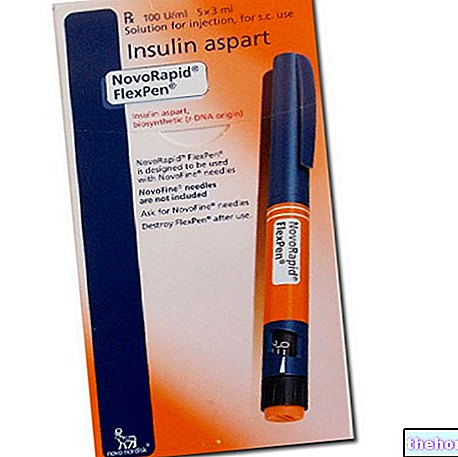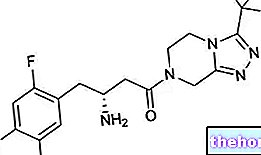
What is Icandra?
Icandra is a medicine that contains the active substances vildagliptin and metformin hydrochloride. It is available as oval tablets (light yellow: 50 mg of vildagliptin and 850 mg of metformin hydrochloride; dark yellow: 50 mg of vildagliptin and 1 000 mg of metformin hydrochloride).
This medicine is identical to Eucreas, which is already authorized in the European Union (EU). The company that makes Eucreas has agreed that its scientific data will be used for Icandra.
What is Icandra used for?
Icandra is used to treat type 2 diabetes (non-insulin-dependent diabetes). It is used in patients whose disease is not sufficiently controlled on the maximum tolerated dose of metformin taken alone or who are already taking the combination of vildagliptin and metformin as separate tablets.
The medicine can only be obtained with a prescription.
How is Icandra used?
The recommended dose of Icandra is one tablet twice a day, one tablet in the morning and one in the evening. The choice of starting dose depends on the dose of metformin currently taken by the patient, but the recommended dose is 50 mg of vildagliptin and 1 000 mg of metformin twice daily. Patients already taking vildagliptin and metformin should be switched to Icandra tablets containing the same doses of each active substance. Vildagliptin doses greater than 100 mg are not recommended. Taking Icandra with or shortly after meals can reduce stomach problems caused by metformin.
Icandra should not be used by patients with moderate or severe kidney problems or liver problems. Kidney function should be monitored regularly in elderly patients taking Icandra. The use of Icandra is not recommended in patients over 75 years of age.
How does Icandra work?
Type 2 diabetes is a disease in which the pancreas does not make enough insulin to control the level of glucose (sugar) in the blood or where the body is unable to use insulin effectively. Icandra contains two active substances, each with a different mechanism of action. Vildagliptin, a dipeptidyl peptidase 4 (DPP-4) inhibitor, works by inhibiting the breakdown of 'incretin' hormones in the body. These hormones, which are released after a meal, stimulate the pancreas to produce insulin. By increasing the level of incretins in the blood, vildagliptin stimulates the pancreas to produce more insulin when the blood sugar level is high. Vildagliptin does not work if the blood glucose concentration is low. Vildagliptin also reduces the amount of glucose produced by the liver by increasing insulin levels and reducing the levels of the hormone glucagon. Metformin basically inhibits the production of glucose and reduces its absorption in the intestine. The result of the combined action of the two active ingredients is a reduction in the glucose present in the blood, which helps to control type 2 diabetes.
How has Icandra been studied?
Vildagliptin as monotherapy was approved by the European Union in September 2007 under the name Galvus, while metformin has been available in the EU since 1959. Vildagliptin can be used with metformin in patients with type 2 diabetes whose disease is insufficient. controlled with metformin alone. Studies carried out on Galvus in addition to the
metformin were used to support the use of Icandra for the same indication. These studies measured the concentration in the blood of a substance called glycosylated hemoglobin (HbA1c), which gives an "indication of how well the blood glucose is controlled."
The applicant also presented the results of two studies showing that the active substances in the two strengths of Icandra were absorbed by the body in the same way as when they were taken as separate tablets.
What benefit has Icandra shown during the studies?
Vildagliptin was more effective than placebo (a dummy treatment) in reducing HbA1c levels when added to metformin. Patients who added vildagliptin experienced a decrease in HbA1c levels of 0.88% after 24 weeks, with an initial level of 8.38%. In contrast, patients who added placebo experienced smaller changes in levels. of HbA1c, with an increase of 0.23%, starting from an initial level of 8.30%.
What is the risk associated with Icandra?
The most common side effects with Icandra (seen in more than 1 in 10 patients) are nausea, vomiting, diarrhea, abdominal pain and loss of appetite. For the full list of side effects reported with Icandra, see the package leaflet.
Icandra must not be used in people who may be hypersensitive (allergic) to vildagliptin, metformin or any of the other substances. It must not be used in patients with diabetic ketoacidosis (high levels of ketones and acids in the blood), diabetic precoma, kidney or liver problems, conditions that can affect the kidneys or diseases that cause reduced oxygen supply to the tissues. such as heart or lung failure or a recent heart attack. It should also not be used in patients with alcohol intoxication (excessive alcohol consumption) or alcoholism, or during breastfeeding. For the full list of restrictions on use, see the package leaflet.
Why has Icandra been approved?
The Committee for Medicinal Products for Human Use (CHMP) decided that vildagliptin taken with metformin reduces blood glucose levels and that the combination of the two active substances in one tablet can help patients to comply with the treatment. therefore decided that the benefits of Icandra outweigh its risks in the treatment of patients with type 2 diabetes mellitus, who are unable to achieve sufficient glycemic control at their maximum tolerated dose of oral metformin alone or who are already on therapy with the combination of vildagliptin and metformin as separate tablets. The Committee recommended the granting of a marketing authorization for Icandra.
Learn more about Icandra
On 1 December 2008, the European Commission granted Novartis Europharm Limited a "Marketing Authorization" for Vildagliptin / Metformin Hydrochloride Novartis, valid throughout the European Union. On 6 February 2009, the name of the medicine was changed to Icandra.
For the full version of Icandra's EPAR, click here.
Last update of this summary: 02-2009.
Information about Icandra published on this page may be out of date or incomplete. For a correct use of this information, see the Disclaimer and useful information page.









.jpg)


















